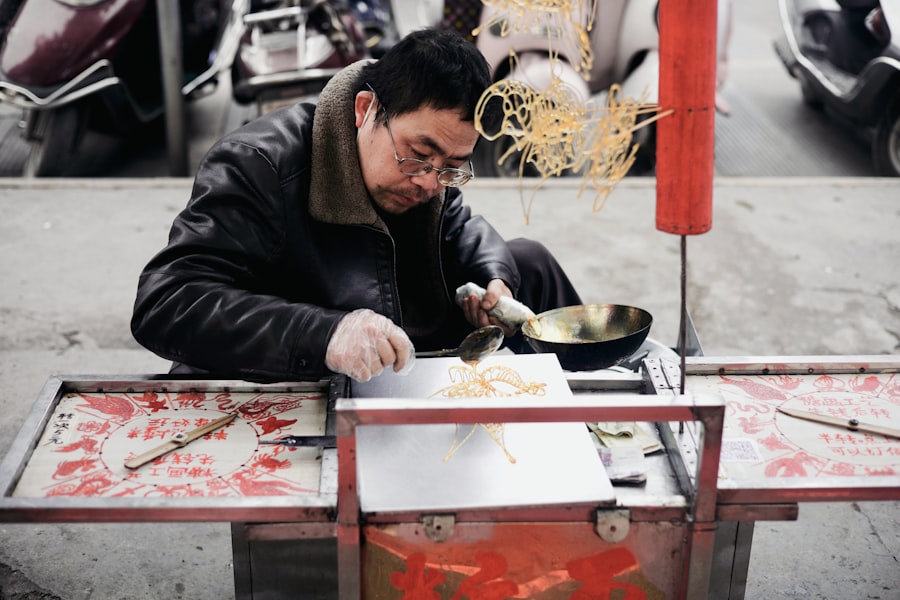Banaue Rice Terraces: A Wonder of Ancient Farming
Description
Nestled in the mountainous region of the Philippines, the Banaue Rice Terraces are often referred to as the “Eighth Wonder of the World.” These terraces, carved into the mountainside over 2,000 years ago by the Ifugao people, represent a remarkable feat of engineering and agricultural ingenuity. The terraces stretch over 2,000 square kilometers and rise to an elevation of approximately 1,500 meters above sea level.
The Banaue Rice Terraces are more than just a stunning visual landscape; they embody a complex system of irrigation and farming that has been passed down through generations. The terraces are designed to maximize arable land in a challenging mountainous environment, showcasing the Ifugao’s understanding of their ecosystem. This intricate network of terraces, which is still in use today, highlights the sustainable practices that have allowed the Ifugao people to thrive in harmony with their environment for centuries.
Key Takeaways
- The Banaue Rice Terraces are an ancient engineering marvel and a UNESCO World Heritage Site in the Philippines.
- They have a rich cultural significance and are a testament to the ingenuity of the Ifugao people who built them over 2,000 years ago.
- The terraces showcase advanced agricultural techniques that have sustained the local community for generations.
- Preservation and conservation efforts are crucial to protect the terraces from modernization and climate change.
- Tourism plays a significant role in the local economy, but it also brings challenges for the preservation of the terraces.
History and Cultural Significance
The history of the Banaue Rice Terraces is deeply intertwined with the Ifugao culture, which has existed for millennia. According to local lore, the terraces were built by ancestors of the Ifugao people as a means to cultivate rice, a staple food that holds significant cultural importance. The construction of these terraces is not merely an agricultural endeavor; it is also a spiritual practice.
The Ifugao believe that their ancestors’ spirits inhabit the land, and thus, maintaining the terraces is seen as a way to honor these spirits and preserve their heritage. The cultural significance of the rice terraces extends beyond agriculture. They are central to various rituals and festivals that celebrate the agricultural cycle, such as the Imbayah Festival, which showcases traditional dances, music, and crafts.
These events serve not only as a means of preserving Ifugao traditions but also as a way to foster community spirit and identity. The terraces are a living testament to the Ifugao’s resilience and adaptability, reflecting their values of cooperation and respect for nature.
Engineering and Agricultural Techniques

The engineering behind the Banaue Rice Terraces is a marvel of ancient ingenuity. The terraces were constructed using simple tools and techniques that have been refined over generations. The Ifugao people utilized locally sourced materials such as stone, wood, and soil to create a series of stepped platforms that follow the contours of the mountainside.
This design minimizes soil erosion and maximizes water retention, allowing for efficient irrigation. Irrigation is a critical component of rice cultivation in the terraces. The Ifugao developed an intricate system of canals and dikes that channel water from nearby rivers and streams into the fields.
This system not only ensures that each terrace receives adequate water but also helps maintain soil fertility.
The combination of these techniques has allowed the Ifugao to cultivate rice varieties that are well-suited to their unique environment, resulting in high yields despite challenging conditions.
Preservation and Conservation Efforts
| Effort | Metrics |
|---|---|
| Number of Protected Areas | 500 |
| Species Conservation Programs | 50 |
| Forest Restoration Projects | 100 |
| Marine Protected Areas | 200 |
In recent years, there has been growing concern over the preservation of the Banaue Rice Terraces due to various threats such as modernization, climate change, and population pressures. Recognizing their cultural and historical significance, local communities, government agencies, and non-governmental organizations have initiated several conservation efforts aimed at safeguarding this UNESCO World Heritage Site. These initiatives focus on promoting sustainable agricultural practices, restoring damaged terraces, and raising awareness about the importance of preserving this cultural landscape.
One notable effort is the establishment of community-based programs that involve local farmers in conservation activities. These programs emphasize traditional farming methods while integrating modern techniques that enhance productivity without compromising environmental integrity. Workshops and training sessions are conducted to educate farmers about sustainable practices such as crop rotation, organic farming, and soil conservation techniques.
By empowering local communities to take an active role in preservation efforts, these initiatives aim to ensure that the rice terraces continue to thrive for future generations.
Tourism and Local Economy
Tourism plays a significant role in the local economy surrounding the Banaue Rice Terraces. Each year, thousands of visitors flock to this UNESCO World Heritage Site to marvel at its breathtaking beauty and learn about its cultural significance. The influx of tourists has created numerous opportunities for local businesses, including homestays, restaurants, and guided tours.
This economic activity provides much-needed income for local families and helps sustain traditional crafts and practices. However, while tourism can be beneficial for the local economy, it also presents challenges. The increased foot traffic can lead to soil erosion and damage to the terraces if not managed properly.
To mitigate these impacts, local authorities have implemented measures such as designated walking paths and visitor education programs that emphasize responsible tourism practices. By promoting sustainable tourism initiatives, stakeholders aim to strike a balance between economic development and environmental conservation.
Impact of Modernization and Climate Change

Threats to Traditional Farming Practices
As younger generations migrate to urban areas in search of better opportunities, traditional farming practices are at risk of being abandoned. This shift not only threatens the agricultural viability of the terraces but also jeopardizes the cultural heritage associated with them.
Climate Change Exacerbates the Challenges
The loss of traditional knowledge regarding rice cultivation and terrace maintenance could lead to further degradation of this iconic landscape. Climate change exacerbates these challenges by altering weather patterns and increasing the frequency of extreme weather events such as typhoons and droughts. These changes can disrupt the delicate balance required for successful rice cultivation in the terraces.
Adaptive Strategies for a Sustainable Future
For instance, prolonged dry spells can lead to water shortages, while heavy rainfall can cause landslides and erosion. To combat these issues, local farmers are exploring adaptive strategies such as diversifying crops and implementing water conservation techniques.
Recognition as a UNESCO World Heritage Site
In 1995, the Banaue Rice Terraces were designated as a UNESCO World Heritage Site in recognition of their outstanding universal value. This designation not only highlights their cultural significance but also underscores the need for global awareness and support for their preservation. Being part of this prestigious list has brought international attention to the challenges faced by the terraces and has facilitated funding for conservation projects.
The UNESCO designation has also fostered collaboration among various stakeholders, including government agencies, NGOs, and local communities. These partnerships have led to initiatives aimed at promoting sustainable tourism practices while ensuring that local traditions are respected and preserved. Furthermore, UNESCO’s involvement has helped raise awareness about the importance of protecting cultural landscapes worldwide, serving as a model for other regions facing similar challenges.
Future Challenges and Opportunities
Looking ahead, the future of the Banaue Rice Terraces is fraught with challenges but also ripe with opportunities for innovation and resilience. As modernization continues to exert pressure on traditional practices, there is an urgent need for strategies that promote sustainable development while honoring cultural heritage. Engaging younger generations in agricultural practices through education and community programs can help bridge the gap between tradition and modernity.
Moreover, leveraging technology can provide new avenues for enhancing agricultural productivity without compromising environmental integrity. For instance, integrating precision agriculture techniques could optimize water usage and improve crop yields while minimizing ecological impact. Additionally, fostering partnerships with academic institutions can facilitate research on climate-resilient crops tailored to the unique conditions of the terraces.
In conclusion, while challenges abound for the Banaue Rice Terraces in an era marked by rapid change, there exists a wealth of opportunities for innovation rooted in tradition. By embracing sustainable practices and fostering community engagement, it is possible to ensure that this remarkable cultural landscape continues to thrive for generations to come.
If you are interested in learning more about the cultural heritage of the Philippines, you may want to check out this article on traditional Filipino festivals. These festivals often showcase the rich history and traditions of the country, including the significance of landmarks like the Banaue Rice Terraces. The article provides insights into the various celebrations and events that take place throughout the year, offering a deeper understanding of the cultural importance of sites like the Banaue Rice Terraces.
FAQs
What are the Banaue Rice Terraces?
The Banaue Rice Terraces are ancient terraces carved into the mountains of Ifugao in the Philippines. They are often referred to as the “Eighth Wonder of the World” and are a UNESCO World Heritage Site.
How were the Banaue Rice Terraces created?
The terraces were hand-carved over 2,000 years ago by the Ifugao people using minimal equipment. They were created to make the mountainous terrain suitable for rice cultivation.
What is the significance of the Banaue Rice Terraces?
The terraces are not only a stunning example of ancient engineering and agricultural practices, but they also hold cultural and historical significance for the Ifugao people. They are a symbol of their heritage and connection to the land.
Can visitors explore the Banaue Rice Terraces?
Yes, visitors can explore the terraces and even hike through them. There are designated viewpoints and trails for tourists to experience the beauty and grandeur of the terraces.
What is the current state of the Banaue Rice Terraces?
The terraces are facing challenges such as erosion, lack of maintenance, and the migration of younger generations away from traditional farming practices. Efforts are being made to preserve and protect the terraces for future generations.





